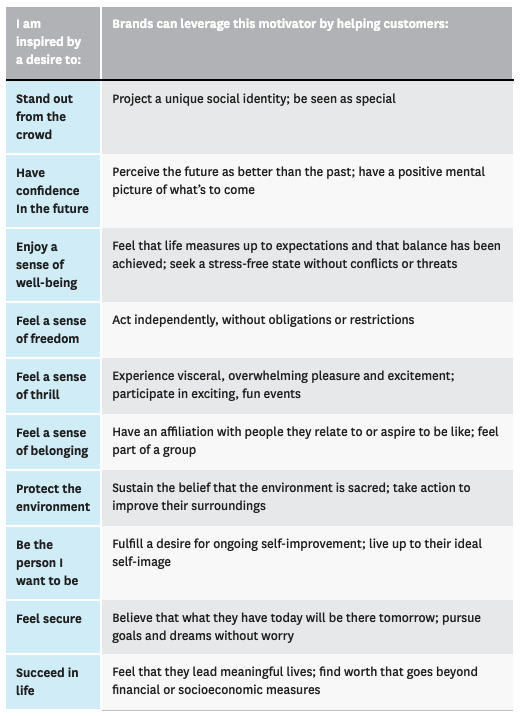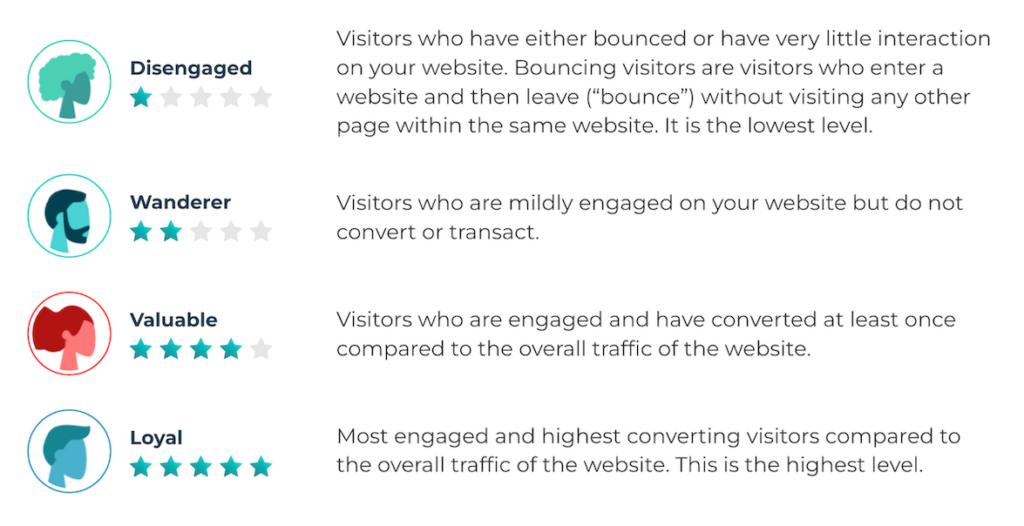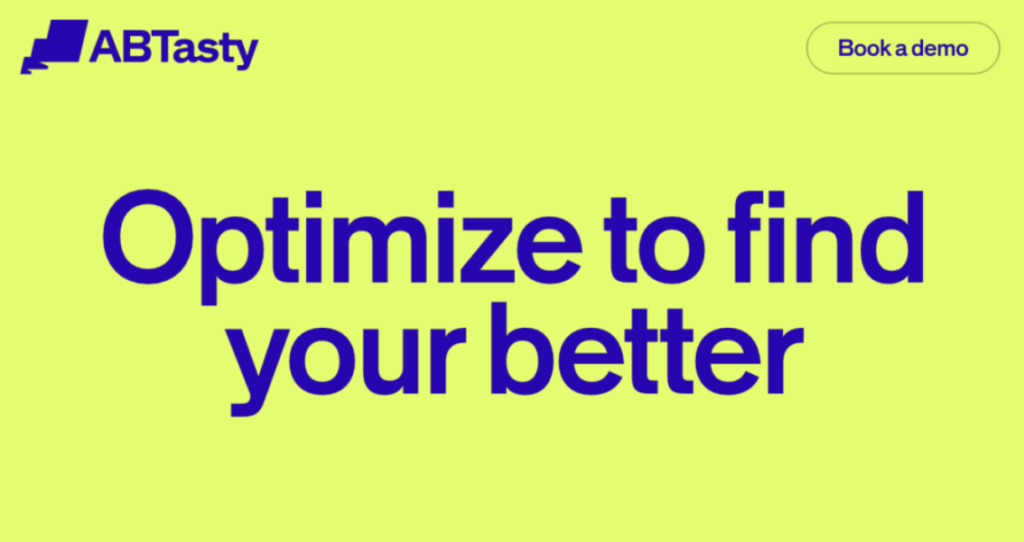We invite you to also read our previous article in this series, Measuring Your Digital Impact, or the series introduction.
This is the fifth part of our series on a data-driven approach to customer-centric marketing. We met with our partner Sophie D’Souza, Vice President of Optimization at Spiralyze, and Rémi Aubert, Co-CEO & Co-Founder of AB Tasty, who talk about what a customer-centric culture really means, why it’s so important for companies to foster one, the data that enables such a culture, and the challenges and benefits involved.
How would you define a customer-centric culture?
In this data series, we’ve discussed ways to use and analyze data, metrics, and experimentation to better understand your customers, meet their needs and forge emotional connections with them. All of these things contribute to the ultimate goal of building a customer-centric vision and culture for brands.
But what defines a customer-centric culture? For Sophie, “Being customer-centric means that the customer is at the nucleus of the business – the shared collection of values, expectations, practices, and decisions that guide and inform team members are centered around the customer and the needs of the customer. And a big part of achieving that is ensuring data isn’t siloed – it’s not segmented to any one department like upper management or customer success; it permeates every aspect of the company; formal and informal systems, behaviors, business decisions and values all revolve around the customer.”
In Rémi’s opinion, customer-centricity is also very much about “Prioritizing customers above prospects in your day-to-day work. It’s easiest when you’re a small business, but it’s vital to keep this spirit while you grow. Acquiring new customers is important, but we need to remember that our existing customers have already given us their trust. It’s our job to repay them for that with positive experiences, or at least excellent customer support so we can maintain positive experiences and turn any negative experiences into positive ones to ensure we retain them.
“Above all, being customer-centric means not being mercenary: it’s the foundation of organic growth, where word-of-mouth from satisfied customers spreads and turns prospects into new customers.”
Why is the democratization of data important?
“Data democratization is essential for building a customer-centric culture,” explains Sophie. “Shared, accessible data that isn’t siloed to any one department is the best way to gain customer knowledge. Equally important is a system for gathering, storing, interpreting, and acting upon this data whenever possible.”
“Constant product and website experimentation has shed light on the value of feedback – both qualitative and quantitative – and proven its value for providing insights to the organization. Companies now understand the meaning of a data-driven culture, and the dissemination of these insights across the entire organization is what drives customer-centricity.”
Rémi notes that during the last ten years, the emphasis has been on collecting data. “But today, we’re in a phase of interpreting data in order to act upon it – and this is a mature phase, we know the right KPIs to use to bring value; tomorrow, we’ll be able to automate this data, but few organizations have attained that capability yet.”
What types of data are needed to build a customer-centric culture?
“A customer-centric culture is a data-led business model, where both qualitative and quantitative data are essential – and experimentation plays a vital role,” says Sophie. “Quantitative data gives us brilliant direction. It’s often dictated by product centricity – how customers are interacting with products, and the actions they’re taking. Qualitative data, on the other hand, is dictated by customer needs. Pairing them will provide tons of valuable information. You can gather this from many different sources: engagement and community building (e.g., encouraging customers to leave reviews, asking questions on social channels, etc.).”
“But experimentation is a core part of this, allowing us to directly measure how individuals coming to our product or our website are interacting with us and what actions should accordingly be taken.”
Rémi agrees: “Even if we understand the quantitative aspect or the qualitative aspect of our data, we won’t be able to measure the impact of customer behavior if we’re not able to change those behaviors. This is where testing and personalization come into play.
“It’s fine to identify issues, but if we can’t propose solutions and measure their efficacy, we won’t be able to adapt our culture of customer centricity to new needs. The complementarity between quantitative and qualitative data is essential. Quantitative data helps us identify problems, while qualitative data usually helps find solutions.”
Sophie’s on board: “Experimentation lets us put the customer first because we can test different solutions based on the problems we’ve identified. So rather than rolling out an idea we’ve deemed internally to be the best, experimentation lets the customer guide our actions, and in that way, we know we’re responding to real needs.”
Are there problems associated with acquiring the necessary data?
Rémi says the main problem is related to faulty data collection: “We sometimes see biased data due to incomplete data collection. Biased data is useless. Another issue we often see is that of overcollection: people collect far more data than they need, then find themselves lost in a data deluge that’s impossible to analyze and from which they can’t extract insights. The enemy of good data is too much data because you can’t orchestrate it.”
“We’ve learned that too much data equals clutter and distraction,” says Sophie. “There’s a lack of central systems in place that are efficient enough to process that much data and make it actionable. Designing systems to capture the information we need at scale and disseminate it while minimizing variance by individual interpretation is the objective for businesses today.”
What are the challenges to achieving a customer-centric culture?
Rémi tells a story about a client from a top-tier luxury jeweler. “It’s very difficult for brands like that, which have strict graphic charts and editorial guidelines, to be customer-centric, as they have little flexibility for testing. These brands are very powerful: you can’t make the slightest modification without validation by the entire brand team. So even if you know you can improve the customer journey or experience on the website, you can’t implement any changes because brand policy prohibits it. The result? Even if you have data proving a given change will improve their customer satisfaction, brand ‘integrity’ won’t allow it.”
Sophie sees a lot of progress being made, but certain barriers remain. “To be a data-driven organization, you need an open mind and an experimentation mindset, because a customer-centric culture is premised on innovation and constant change to meet customer needs. A big challenge today is that not everyone in a given organization has a data-driven mindset, although website and product experimentation and personalization are paving the way to its adoption.”
Rémi and Sophie agree that in a data-driven organization, people at every level are empowered to contribute, because it’s data, not experience, that matters. A new hire can propose a test hypothesis just as valuable as one suggested by a CEO. This kind of democratization is happening at Hanna Andersson, a children’s clothing manufacturer where all employees have a voice and are encouraged to submit test ideas. The best ones are acted upon, as in this AB Tasty case study where a small change in product image led to big impact.
How does a customer-centric culture benefit businesses/brands?
According to research by Deloitte and Touche, customer-centric businesses are 60% more profitable than their product-focused counterparts. Companies that put the customer at the center of their organization enjoy increased customer lifetime value and reduced churn.
“There’s a plethora of concrete benefits, including increased retention, customer loyalty, referrals… Operational efficiency is a major benefit, and it’s fueled by experimentation. This means that we’re not just guessing, but spending our time where it’s most valuable: on meeting real customer needs.
“Then there’s innovation. When we receive customer feedback, whether online or off, the products are iterated upon accordingly. It allows us to be more creative with solutions for customer problems rather than small iterations.”
Rémi adds that there’s also an important internal benefit to being customer-centric. “When your experiments have been successful and you’ve increased customer satisfaction, your clients are happy and so are your teams. That boosts their confidence in the product they’ve developed. It’s very rewarding.”
Sophie enthusiastically agrees: “It rallies everyone around the customer. No matter what role you play in an organization, you can see the benefit of your work.”











 Sarah Davis
Sarah Davis
